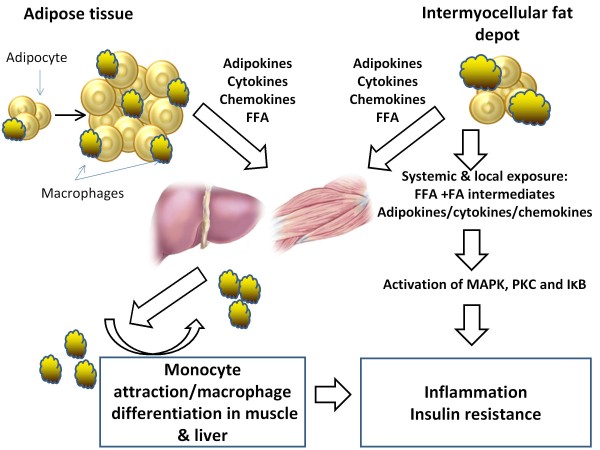Figure 2.
The model for macrophage-metabolic interactions and inflammation in obesity. Adipose tissue expansion in obesity results in an inflammatory state characterized by production of adipokines, cytokines, and chemokines. This is also associated with free fatty acid [FFA] release via increased lipolysis. Activation of resident or 'M2' adipose tissue macrophages leads to secretion of inflammatory cytokines and chemokines; this will lead to attraction of monocytes that differentiate to macrophages. Fatty acids and cytokines spill into circulation, and get to metabolic tissues including skeletal muscle and liver. In addition, the expansion of the intermyocellular fat depot also attracts macrophages, and this is associated with secretion of pro-inflammatory cytokines, chemokines and FFA release that occur locally. The exposure of muscle to cytokines, chemokines and fatty acids from systemic and local sources triggers an inflammatory response characterized by activation of inflammatory pathways, upregulation of gene expression, and synthesis and secretion of inflammatory cytokines and chemokines. The attracted macrophages will in turn secrete inflammatory molecules, which signal through inflammatory pathways propagating this inflammatory response and resulting in muscle inflammation and insulin resistance. JNK = c-jun amino terminal kinase; PKC = protein kinase C.

